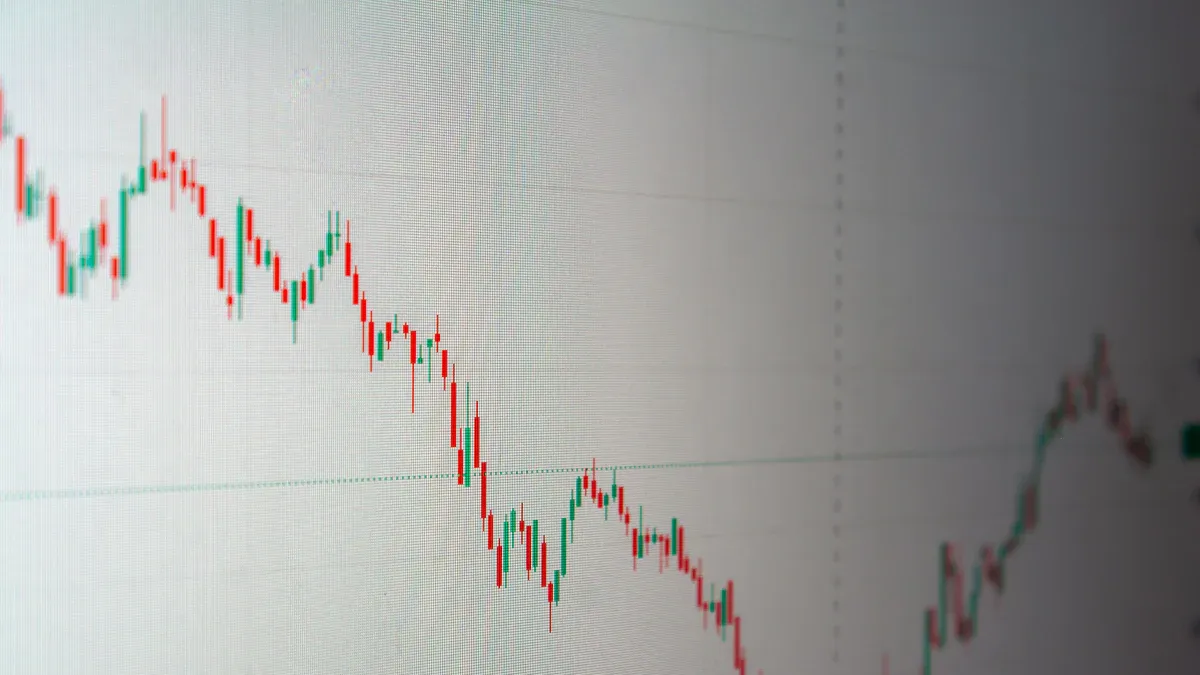- EasyCard
- Trade
- Help
- Announcement
- Academy
- SWIFT Code
- Iban Number
- Referral
- Customer Service
- Blog
- Creator
Historical Review of U.S. Stock Market Performance During Periods of U.S.-China Tensions

Image Source: pexels
During periods of U.S.-China tensions, the volatility of the U.S. stock market significantly increases. Investors’ reactions to trade negotiations and policy changes directly affect market sentiment, leading to fluctuations in major indices. For example, the S&P 500 index rose by 0.09%, the Nasdaq Composite increased by 0.31%, the Dow Jones Industrial Average slightly fell by 1.11 points, and the Russell 2000 small-cap index rose by 0.6%. Although the overall market performance was relatively positive, future inflation data and Federal Reserve policies may still heighten market uncertainty. Historical data show that U.S.-China relations and U.S. stock market trends are typically influenced by geopolitical factors in the short term, but economic fundamentals dominate in the long term.
Historical Review of U.S.-China Relations and U.S. Stock Market Trends

Image Source: unsplash
Trade War Period (2018-2019)
From 2018 to 2019, the U.S.-China trade war became a global focal point. The U.S. imposed tariffs on Chinese goods, and China responded with retaliatory measures, leading to heightened global market volatility. The U.S. stock market exhibited significant volatility during this period. The S&P 500 index cumulatively fell by 0.47%, the Nasdaq index dropped by 0.27%, and the Dow Jones Industrial Average declined by 0.16%. Investors were highly sensitive to the progress of trade negotiations, with each piece of news directly impacting market trends.
Additionally, the U.S. Consumer Confidence Index dropped to 52.2 during this period, reflecting consumer concerns about the economic outlook. Inflation expectations for the coming year rose from 5.0% to 6.5%, further exacerbating market uncertainty. Nevertheless, the Federal Reserve’s monetary policies helped alleviate market panic to some extent, enabling the U.S. stock market to gradually stabilize by the end of 2019.
U.S.-China Relations During the Early Pandemic (2020)
In early 2020, the outbreak of the COVID-19 pandemic further strained U.S.-China relations. Disagreements over the virus’s origin and medical supply issues heightened market unease. The U.S. stock market experienced a sharp decline in the early stages of the pandemic, with the S&P 500 index dropping by over 30% in just a few weeks.
However, as the Federal Reserve quickly implemented rate cuts and quantitative easing policies, the market gradually stabilized. Despite U.S.-China tensions, investors began to focus on prospects for economic recovery. Technology stocks performed strongly during this period, driving a rapid rebound in the Nasdaq index. U.S.-China relations and U.S. stock market trends during this phase were characterized by significant short-term impacts but relatively quick long-term recovery.
Technology Export Restrictions and Geopolitical Tensions (2022-2023)
From 2022 to 2023, the U.S. imposed export restrictions on Chinese technology companies, targeting key sectors such as semiconductors and advanced chips. This policy directly impacted the technology sector, particularly causing stock price declines for companies closely tied to Chinese supply chains. At the same time, geopolitical tensions further escalated, increasing investor risk aversion.
During this period, the U.S. economy recorded negative annualized growth in the first quarter, reflecting pressures on economic growth. Nevertheless, certain sectors, such as energy and healthcare, demonstrated resilience. U.S.-China relations and U.S. stock market trends during this phase showed a divergence, with technology stocks under pressure while traditional industries remained relatively stable.
Tip: Historical data indicate that changes in U.S.-China relations have a significant short-term impact on the U.S. stock market, but in the long term, economic fundamentals remain the key determinant of market trends.
Key Factors Influencing U.S.-China Relations and U.S. Stock Market Trends
Impact of Policies and Tariffs on Market Expectations
Changes in U.S.-China relations often directly affect market expectations through policies and tariffs. During the 2018-2019 trade war, the U.S. imposed tariffs on Chinese goods worth hundreds of billions of dollars. This policy led to rising corporate costs, shrinking profit margins, and a blow to investor confidence in future economic growth. The S&P 500 and Dow Jones Industrial Average exhibited significantly increased volatility during this period.
Tariff policies also affected the stability of global supply chains. Many multinational companies had to reassess production and logistics strategies to address potential cost increases. This uncertainty heightened market sensitivity to policy changes. Investors typically adopt a wait-and-see approach when faced with new tariff policies, awaiting clearer signals.
Changes in Investor Sentiment and Risk-Averse Behavior
Investor sentiment is a key factor influencing U.S.-China relations and U.S. stock market trends. When U.S.-China relations become tense, market risk aversion often intensifies. Demand for traditional safe-haven assets, such as gold and the U.S. dollar, increases, while high-risk assets like stocks may face sell-offs. For example, in early 2020, disagreements over the origin of the pandemic heightened market unease, leading to sharp short-term declines in U.S. stocks.
Changes in risk-averse behavior are also reflected in capital flows. Data show that when geopolitical risks rise, capital typically flows from emerging markets to the U.S. market. Despite U.S.-China tensions, the U.S. market remains a relatively safe investment choice. This capital flow helps mitigate downward pressure on U.S. stocks to some extent.
Role of Federal Reserve Policies and Economic Data
The Federal Reserve’s monetary policies and economic data play a critical role in regulating U.S.-China relations and U.S. stock market trends. During periods of U.S.-China tensions, the Federal Reserve often stabilizes markets by adjusting interest rates and implementing quantitative easing policies. For example, during the 2020 pandemic, the Federal Reserve quickly lowered rates to near zero and launched large-scale asset purchase programs. These measures helped restore market confidence in the short term.
Economic data also provide important references for investors. For instance, indicators such as non-farm payrolls, the Consumer Confidence Index, and inflation rates reflect the health of economic fundamentals. When these data perform strongly, markets may remain optimistic about the future despite U.S.-China tensions. Conversely, weak data can exacerbate market concerns.
Tip: While changes in U.S.-China relations significantly impact market sentiment and short-term trends, in the long term, economic fundamentals and policy adjustments remain the core factors determining U.S. stock market performance.
Comparison and Insights from U.S. and Chinese Stock Markets

Image Source: pexels
Differences in Market Capitalization and Industry Structure
The U.S. and Chinese stock markets exhibit significant differences in market capitalization and industry structure. The U.S. stock market is dominated by technology, healthcare, and consumer goods sectors. In the S&P 500 index, the technology sector accounts for over 25%, with tech giants like Apple and Microsoft ranking among the top globally by market capitalization. In contrast, the Chinese stock market has a more diversified industry distribution. Financials, industrials, and energy sectors hold significant weight, with banks and insurance companies playing a prominent role in market capitalization rankings.
Additionally, the market capitalization of the U.S. stock market far exceeds that of the Chinese stock market. As of 2023, the total market capitalization of the U.S. stock market was approximately $40 trillion, while that of the Chinese stock market was about $10 trillion. This gap reflects differences in the economic size and maturity of the capital markets of the two countries. The high liquidity and internationalization of the U.S. stock market attract more global investors, while the Chinese stock market primarily serves domestic investors.
Trends in Foreign Capital Flows
In recent years, foreign capital flow trends in the U.S. and Chinese stock markets have shown new characteristics. Global investors’ focus on China’s artificial intelligence sector has significantly increased. With China’s rapid development in AI technology, related companies have attracted substantial foreign capital. Meanwhile, the convening of private enterprise symposiums has boosted investor confidence in Chinese economic policies.
Geopolitical factors have significantly influenced foreign capital flows. For example, changes in the Russia-Ukraine conflict have led some capital to flow from European markets to the U.S. market. The U.S. market, due to its stability and safe-haven attributes, remains a primary destination for foreign capital. However, the attractiveness of the Chinese market is gradually increasing, particularly in new energy and high-tech sectors.
Tip: The differences between the U.S. and Chinese stock markets provide investors with diverse options. Understanding the characteristics of both markets and trends in foreign capital flows can help formulate wiser investment strategies.
Historical experience shows that U.S.-China tensions significantly impact U.S. stocks in the short term. Market volatility increases, and investor sentiment becomes sensitive, particularly during policy changes or geopolitical events. However, in the long term, economic fundamentals remain the core factor determining U.S.-China relations and U.S. stock market trends. The resilience of industries like technology and healthcare helps markets gradually stabilize.
Looking ahead, changes in U.S.-China relations may continue to affect market sentiment and capital flows. Investors should monitor policy developments and industry performance, particularly in areas like technology export restrictions and new energy. Understanding these trends can help formulate more informed investment strategies.
FAQ
Do U.S.-China tensions have a long-term impact on U.S. stock market performance?
U.S.-China tensions typically have a significant short-term impact on U.S. stocks. In the long term, market trends are primarily driven by economic fundamentals. The resilience of industries like technology and healthcare often helps markets recover stability.
How can investors address market volatility caused by changes in U.S.-China relations?
Investors can focus on safe-haven assets, such as gold or the U.S. dollar. Additionally, diversifying investments and monitoring industry trends, such as new energy and technology sectors, can help mitigate risks.
How do Federal Reserve policies mitigate the impact of U.S.-China tensions on U.S. stocks?
The Federal Reserve stabilizes market sentiment through rate cuts and quantitative easing policies. These measures typically alleviate investor panic in the short term and support gradual market recovery.
Which industries were most affected during the U.S.-China trade war?
During the trade war, technology and manufacturing industries were the most affected. Tariff policies increased supply chain costs, reduced corporate profit margins, and led to significant stock price volatility.
How do trends in foreign capital flows reflect changes in U.S.-China relations?
During geopolitical tensions, capital typically flows to the U.S. market for safety. Meanwhile, China’s attractiveness in new energy and artificial intelligence sectors is gradually increasing, drawing some foreign capital inflows.
During periods of U.S.-China tensions, heightened market volatility underscores the importance of flexible fund management and low-cost trading for investors navigating uncertainty. BiyaPay offers a seamless financial solution, enabling trading in U.S. and Hong Kong stocks without offshore accounts, allowing you to participate in the market cost-effectively, whether capturing short-term volatility through high-frequency trading or investing in resilient sectors for the long term.
It supports USD, HKD, and 30+ fiat and digital currencies with real-time exchange rate transparency, ensuring clear transactions and aiding risk management. With remittance fees as low as 0.5% across 190+ countries, it facilitates flexible cross-border fund allocation to adapt to market shifts. A flexible 5.48% annualized yield savings product with no lock-in period optimizes capital use in volatile markets, boosting return potential. Sign up for BiyaPay today to combine robust investment strategies with BiyaPay’s low-cost tools for a flexible, secure investment experience!
*This article is provided for general information purposes and does not constitute legal, tax or other professional advice from BiyaPay or its subsidiaries and its affiliates, and it is not intended as a substitute for obtaining advice from a financial advisor or any other professional.
We make no representations, warranties or warranties, express or implied, as to the accuracy, completeness or timeliness of the contents of this publication.




Contact Us
Company and Team
BiyaPay Products
Customer Services
BIYA GLOBAL LLC is a licensed entity registered with the U.S. Securities and Exchange Commission (SEC No.: 802-127417); a certified member of the Financial Industry Regulatory Authority (FINRA) (Central Registration Depository CRD No.: 325027); regulated by the Financial Industry Regulatory Authority (FINRA) and the U.S. Securities and Exchange Commission (SEC).
BIYA GLOBAL LLC is registered with the Financial Crimes Enforcement Network (FinCEN), an agency under the U.S. Department of the Treasury, as a Money Services Business (MSB), with registration number 31000218637349, and regulated by the Financial Crimes Enforcement Network (FinCEN).
BIYA GLOBAL LIMITED is a registered Financial Service Provider (FSP) in New Zealand, with registration number FSP1007221, and is also a registered member of the Financial Services Complaints Limited (FSCL), an independent dispute resolution scheme in New Zealand.


















